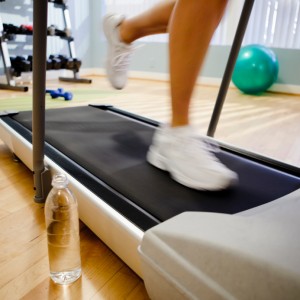Exercise and Heart Health
- Posted on: Jun 30 2015
Keep active, Keep Moving
Don’t Sit if You Don’t Have To
Medical research suggests that a sedentary lifestyle might be among the key risk factors for heart disease. Those who sit at work most of the day tend to have more health problems over time.
However, the good news is that you can help prevent the onset of cardiovascular disease by maintaining an active lifestyle. The American Heart Association recommends moderate exercise for a minimum 150 minutes a week or 75 minutes of vigorous exercise per week for good cardiovascular health.
For those who are at risk of heart attack or stroke (such as due to high cholesterol or blood pressure levels) aerobic exercise lasting 40 minutes, 3 to 4 times a week is recommended. This can help to minimize the risk of stroke and heart attack.
The Benefits of Exercise
Below you will find some information regarding what kind of physical activity should be undertaken for good heart health and the benefits of exercise:
- Defining physical activity: Physical activity can be defined as anything that encourages body movement resulting in the burning of calories. It can include climbing stairs, jogging, walking, playing sports and so on. Aerobic exercises in particular are beneficial for the heart.
- Benefits of exercise: There are a number of different ways exercise can benefit your heart health, including:
- Improvement in circulation and better use of oxygen by the body.
- Increased energy levels and less fatigue enabling you to undertake more activities.
- Enhanced endurance.
- Lowering of blood pressure.
- Improvement in strength and muscle tone.
- Lowering of stress levels, key risk factor for heart disease.
- Body fat reduction and weight management.
- Strengthening of bones and greater joint flexibility.
- Starting an exercise routine: If you are not used to exercising as a daily routine, begin with less strenuous workouts involving stretching, toning etc. Slowly move on to aerobic exercises, starting with moderate and then the more vigorous ones. This way your body will get used to the exercise pattern.
Studies have shown that just replacing sitting with walking or doing routine chores that require standing and moving round for one hour a day has benefit. Walking or actual exercise means one is 40 percent less likely to die over 7 years and those who do household chores, gardening, or other tasks for one hour are 20 percent less likely to die.
To improve your health, do 150 minutes a week of moderate-intensity aerobic activity
Examples:
- walking briskly (3 mph of faster, but not race-walking)
- water aerobics
- doubles tennis
- bicycling slower than 10 mph
- ballroom dancing
OR
75 minutes a week of vigorous-intensity aerobic activity like:
- jogging, running or race-walking
- swimming laps
- singles tennis
- bicycling 10 mph or faster
- aerobic dancing
- hiking uphill or with a heavy backpack
- jumping rope
To gain even more health benefit, increase your activity to 300 minutes a week of moderate-intensity or 150 minutes a week of vigorous-intensity activity.
In addition, is also recommended doing muscle-strengthening activities on 2 or more days a week that work all major muscle groups (legs, hips, back, abdomen, chest, shoulders, and arms)
The health benefits of physical activity are well proven to extend beyond reducing the risk of hypertension and cardiovascular disease. In addition to improving fitness and physical strength, the increase in calories used with exercise leads to decreases in fat tissue. People who regularly exercise are less likely to suffer from depression, anxiety, dementia, osteoporosis, cancer, diabetes and fatty liver. People who exercise are more likely to live longer with a better quality of life.
Exercise is a lifestyle-based therapy that can be considered a powerful medicine with few musculoskeletal side effects.
There is plenty of evidence that the more one exercises, the less the heart muscle stiffens as one ages. A minimum of 30 minutes of dynamic aerobic exercise per session for 4 to 5 days per week over a lifetime prevents sedentary aging of the heart.
Blood pressure tends to increase gradually as we age. Similarly, our arteries become stiffer and harder as we age. However, the better shape one is in, the less steep this trajectory is and arteries tend not to stiffen nearly as much. The more fit one is over their lifetime, the less likely they are to develop high blood pressure, stroke, heart attack, heart failure or diabetes.
Interested in Learning More About Exercise and Heart Health? Contact COR Medical Group.
For more information related to exercise and its impact on cardiovascular health, contact Drs. Jeffery F. Caren and Mark K. Urman from COR Medical. We are located in Los Angeles, California and can be reached at 310.659.0715. We hope to hear from you soon.
Tagged with: Heart Health
Posted in: heart health, Heart Health Blog



